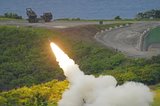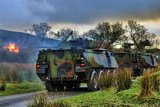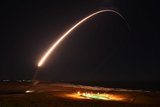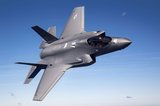DARPA and US Air Force complete second hypersonic weapon flight test
Hypersonic Air-breathing Weapon Concept. (Photo: Northrop Grumman)
The Defense Advanced Research Projects Agency (DARPA) and the USAF have completed the second flight test of the scramjet-powered Hypersonic Air-breathing Weapon Concept (HAWC). The announcement was made by Raytheon Missiles & Defense and Northrop Grumman on 18 July.
This flight test applied the data and lessons from the first flight to mature the operationally relevant weapon concept design.
According to a press release by Northrop Grumman, the missile met all primary and secondary objectives, including demonstrating tactical-range capabilities.
During the flight test, after releasing the HAWC from an aircraft and accelerating to hypersonic speeds using the scramjet engine, the vehicle flew a trajectory designed to intentionally stress the weapon concept to explore its limits and further validate digital performance models.
‘These models, grounded in real-world flight data, are being used to accurately predict and increase performance as the system matures,’ the press release pointed out.
Northrop Grumman and Raytheon completed the first flight test of a scramjet-powered HAWC in September 2021.
More from Defence Notes
-
![How might European countries look to tackle drone incursions?]()
How might European countries look to tackle drone incursions?
Disruption of infrastructure in Europe, whether by cyberattack, physical damage to pipelines or uncrewed aerial vehicles flying over major airports, as has happened more recently, is on the rise. What is the most effective way of countering the aerial aspect of this not-so-open warfare?
-
![Taiwan approved for $11 billion weapon purchase from US]()
Taiwan approved for $11 billion weapon purchase from US
The US State Department’s approval of a multi-billion-dollar sale of weapons to Taiwan includes tactical mission networks equipment, uncrewed aerial systems, artillery rocket systems and self-propelled howitzers as well as anti-tank guided missiles.
-
![Ireland spells out $2.3 billion shopping list in five-year defence spending plan]()
Ireland spells out $2.3 billion shopping list in five-year defence spending plan
Ireland’s multi-annual investment in capital defence spending is set to rise from €300m in 2026 to €360m in 2029–2030 with major upgrades across land, air, maritime and cyber domains.
-
![Canada to deepen integration of multi-domain capabilities to strengthen its defences]()
Canada to deepen integration of multi-domain capabilities to strengthen its defences
The Canadian Department of National Defence has created new organisations to manage the procurement and integration of all-domain solutions and allocated US$258.33 million to strengthen production capacities.
-
![US National Security Strategy prioritises advanced military capabilities and national industry]()
US National Security Strategy prioritises advanced military capabilities and national industry
The 2025 NSS has emphasised investment in the US nuclear and air defence inventory and national industry, but it leaves multiple unanswered questions on how the White House will implement this approach.
-
![Canada set to look away from its neighbour and across the Atlantic for partners]()
Canada set to look away from its neighbour and across the Atlantic for partners
While non-EU UK struggles to join the Security Action for Europe initiative, which provides loans for defence programmes, Canada has become the first country outside Europe to get access – and did so for a nominal fee.
























